Shanghai bok choy, also known as baby bok choy or pak choi, is a leafy green vegetable that has become increasingly popular in recent years due to its delicious taste and numerous health benefits.
Originally from China, this vegetable has spread globally and can now be found in many cuisines. Shanghai-bok choy is a tasty addition to any meal and a great source of vitamins and minerals essential for maintaining a healthy body.
We will explore the many benefits of Shanghai-bok choy and why you should consider incorporating it into your diet. From its low-calorie count to high fibre content, this vegetable is a superfood that packs a powerful punch. Whether you are a health enthusiast looking for new ways to boost your nutrient intake or a foodie searching for exciting new ingredients to add to your recipes, shanghai-bok choy is a must-try.

The Origin And History Of Bok Choy
Bok Choy, also called Chinese cabbage, has been cultivated for thousands of years. Originally from China, it has now gained popularity in cuisines worldwide. Packed with vitamins A, C, and K and calcium and fibre, this dark green leafy vegetable is delicious and highly nutritious.
It is commonly used in stir-fries and soups, but its versatility allows it to be grilled, steamed, or even added to salads for a delightful and healthy side dish. Its mild and sweet flavor makes it a perfect addition to Asian and Western dishes.
Cooking With Shanghai Bok Choy Easy And Flavorful Recipes
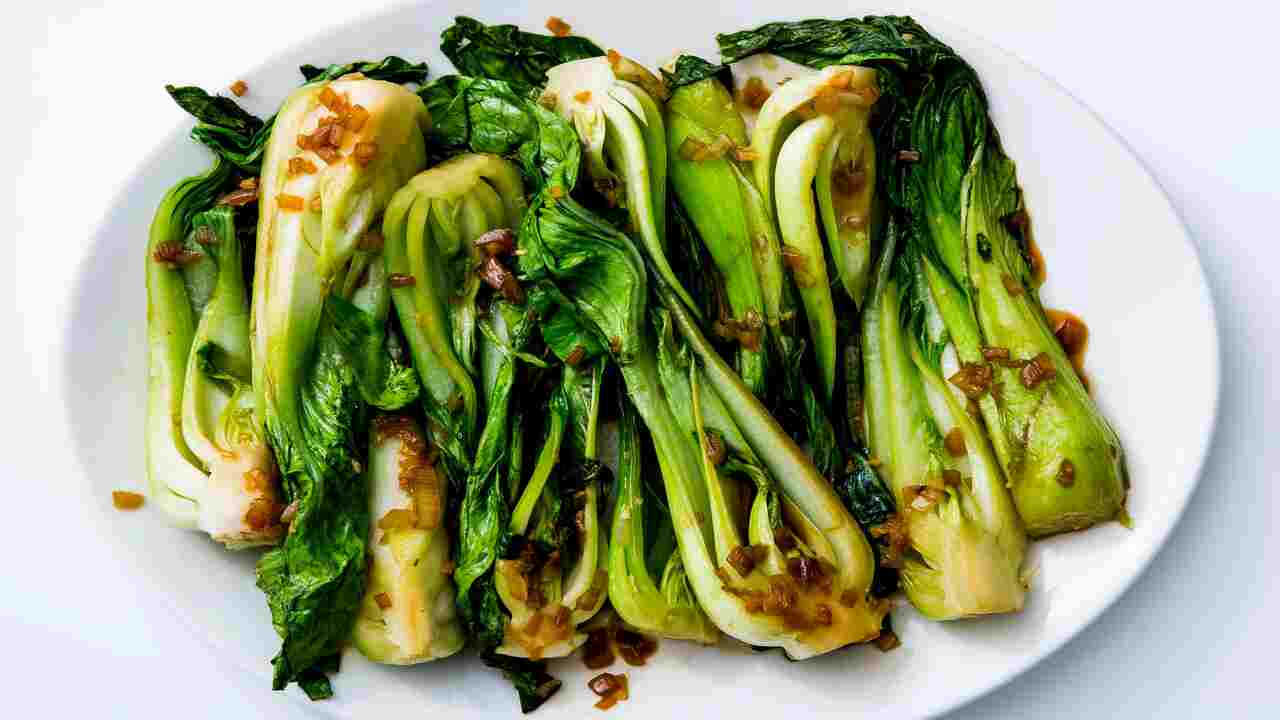
Cooking with Shanghai-Bok Choy can add a delicious and nutritious twist to your meals. This versatile vegetable is known for its crisp texture and mild flavor, making it a perfect addition to stir-fries, soups, and salads.
One simple recipe is to sauté Shanghai Bok-Choy with garlic and soy sauce for a quick and flavorful side dish. For a healthy and tasty option, you can also try steaming or roasting it with a drizzle of olive oil and a sprinkle of salt and pepper. With its vibrant green color and delicate taste, Shanghai-Bok Choy will elevate any dish you prepare.
Nutritional Values Of Shanghai Bok Choy
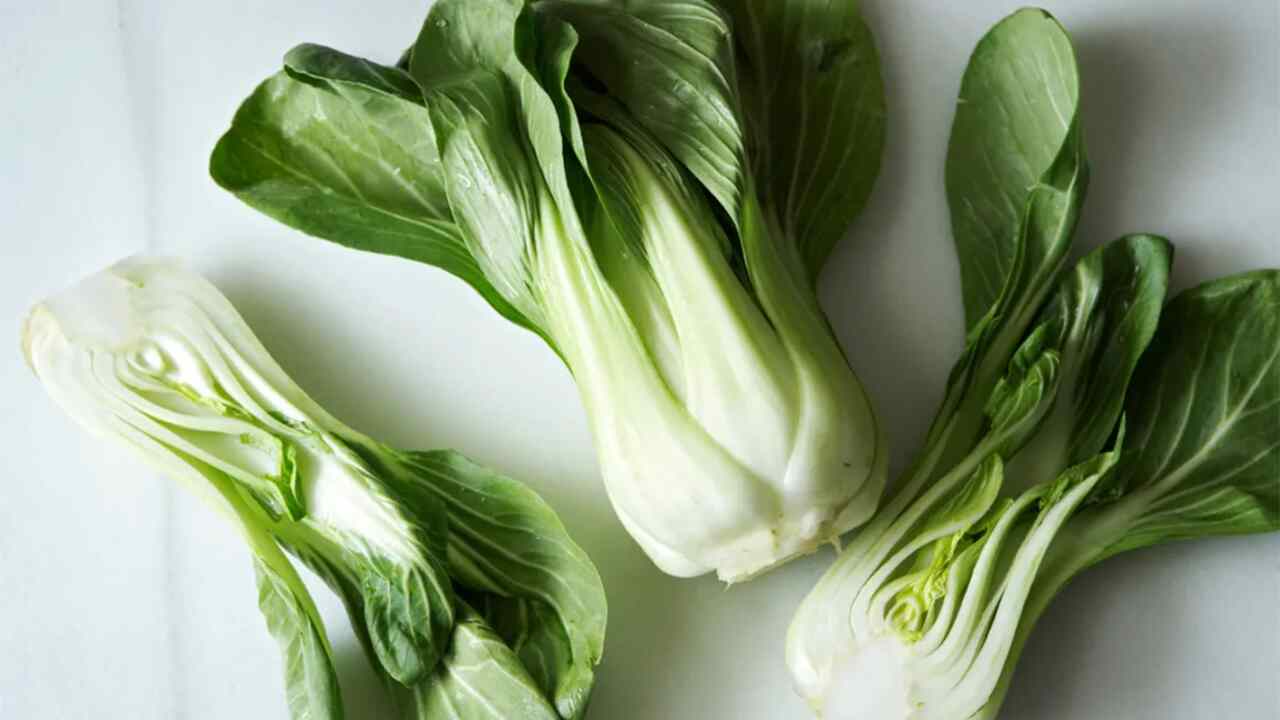
Shanghai-Bok Choy is a nutritious leafy green that is low in calories and fibre. It is packed with vitamins A, C, and K, calcium, and iron. Its high water content helps keep you hydrated and aids in digestion.
Including this versatile vegetable in your diet can boost your immune system and promote overall health. From stir-fries to salads and soups, Shanghai-Bok Choy adds a delicious and nutritious touch to any meal.
Identifying Different Types Of Bok Choy
Regarding bok choy, there are several different types to be aware of. Baby bok choy is smaller, with tender leaves and a mild flavor. Shanghai-bok choy, on the other hand, is larger with crunchy stalks and a slightly bitter taste. Canton bok choy is similar to Shanghai-bok choy but with lighter green leaves.
Taiwan bok choy is a smaller variety with thicker stalks and a slightly sweeter flavor. Dwarf bok choy is compact in size with thick stalks and a crisp texture. Finally, there’s baby Shanghai-bok choy, a mini version of Shanghai-bok choy with a milder flavor.
Shanghai Baby Bok Choy
Shanghai Baby Bok Choy is a smaller, more tender variety of bok choy with pale green stalks and dark green, slightly crinkled leaves. This versatile vegetable has a mild and sweet flavor, making it perfect for stir-fries, soups, or salads. Packed with vitamins A, C, and K, calcium, and iron, Shanghai Baby Bok Choy is delicious and nutritious.
Large Bok Choy
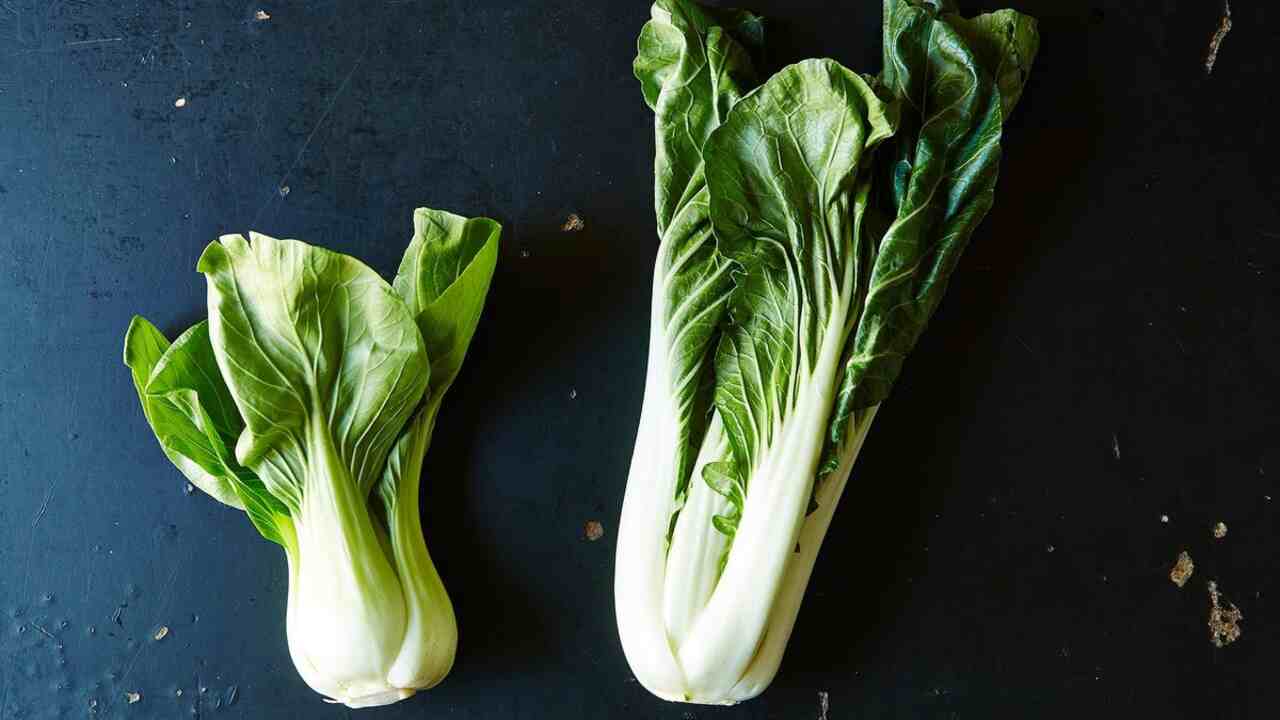
The Large Bok Choy variety features broad, dark green leaves and thick, crisp stalks. It offers a mild, slightly sweet flavor, making it a versatile ingredient for stir-fries, soups, and salads. Before cooking, remember to wash and trim the Large Bok Choy properly. This Chinese vegetable is rich in vitamins A, C, and K, calcium, and potassium.
Little Bok Choy
Little Bok Choy, a smaller variety of bok choy, features tender, crisp stalks and dark green leaves. Its mild, sweet flavor pairs perfectly with stir-fries, soups, and salads. Quick to cook, Little Bok Choy can be sautéed, steamed, or added to your favorite Asian dishes.
This nutrient-rich vegetable contains vitamins A, C, and K, calcium, and iron. Its small size makes it ideal for individual servings or adding variety to vegetable medleys.
How To Select And Store Bok Choy
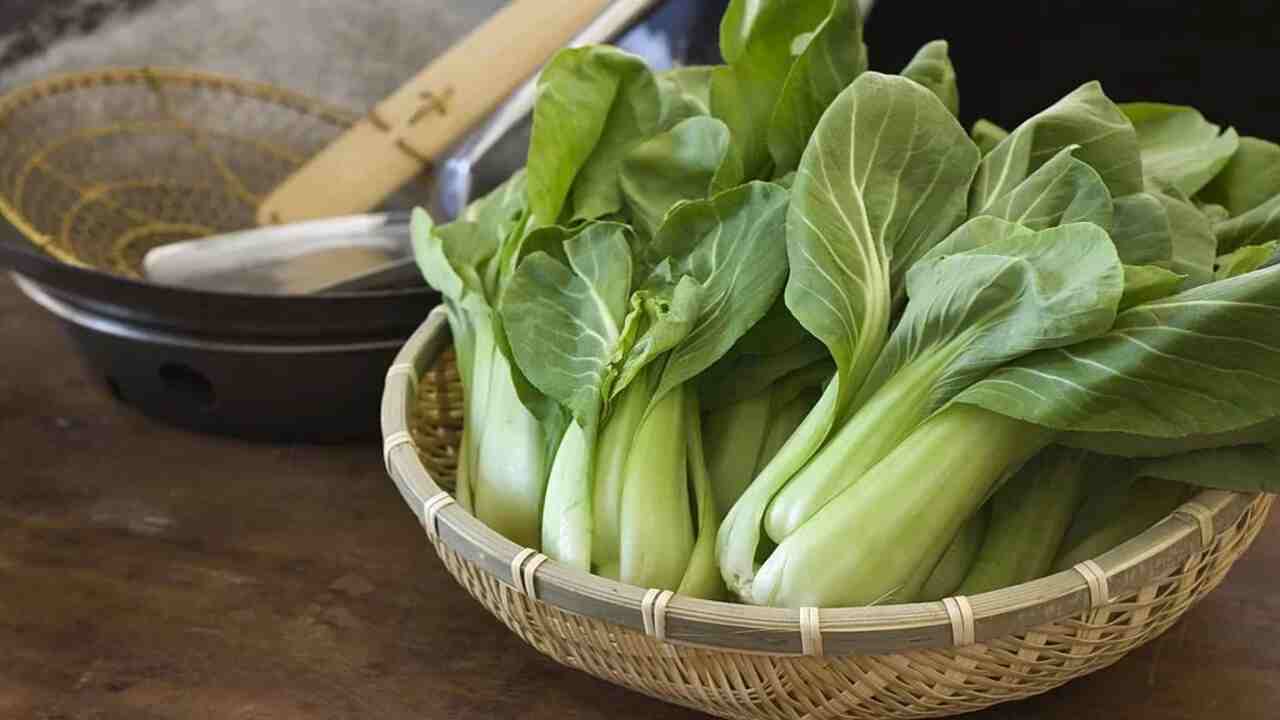
When selecting bok choy, look for vibrant green leaves and crisp stems. Avoid yellowed or wilted leaves as they indicate poor quality. To store bok choy, keep it in the refrigerator in a plastic bag or with the stems in a water container. Use bok choy for the best flavour and texture within a few days of purchasing. Enjoy this versatile vegetable in stir-fries, soups, and salads.
Tips To Choose The Best Bok Choy
When choosing the best bok choy, remember a few key tips. First, look for a bok choy with crisp, firm stalks and vibrant green leaves. Avoid any bok choy that appears wilted or has discoloured spots. Also, choose a bok choy that is relatively small bok size, as a larger bok choy can be tougher and less tender.
Finally, consider the overall freshness of the bok choy – if possible, opt for locally sourced or organic varieties for the best flavor and quality. By following these tips, you can ensure that you’re selecting the best bok choy for your culinary creations.
Preparing Bok Choy For Cooking
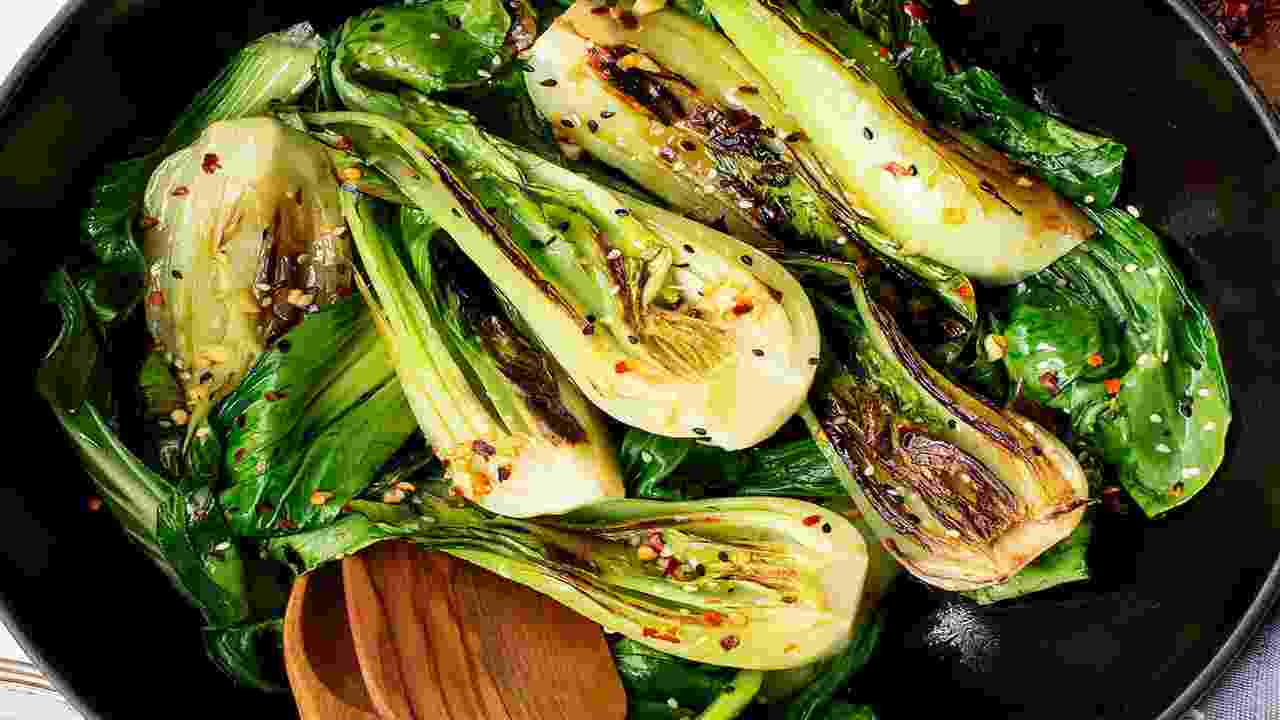
To prepare Shanghai-bok choy for cooking, start by washing and trimming the leaves, removing any damaged or wilted ones. Separate the stalks from the leaves as they cook at different rates. Heat a pan with oil or butter over medium-high heat. Add the bok choy stalks first and cook for 2-3 minutes. Then, add the leaves and any desired seasonings. Cook for 2-3 minutes until the leaves are wilted but still vibrant green.
Cleaning Process
To clean Shanghai-bok choy, thoroughly rinse it under cold water to remove dirt or debris. Separate the leaves and stalks for a more thorough cleaning, paying special attention to the base of the stalks where dirt tends to accumulate. Use a vegetable brush to scrub away any stubborn dirt gently. Once cleaned, pat the bok choy dry with a clean kitchen towel before using.
Cutting Techniques
Different cooking methods call for different techniques for cutting Shanghai-bok choy. It’s best to cut the bok choy into bite-sized pieces for stir-frying to ensure even cooking. In soups or stews, separate the leaves from the stalks and cut them into smaller strips.
For a beautiful presentation, slice the stalks diagonally while keeping the leaves intact. If you’re making a salad or raw dish, thinly slice the bok choy. Experiment with different cutting techniques to find the perfect texture and taste for your preferred cooking method.
Cooking Methods For Shanghai Bok Choy
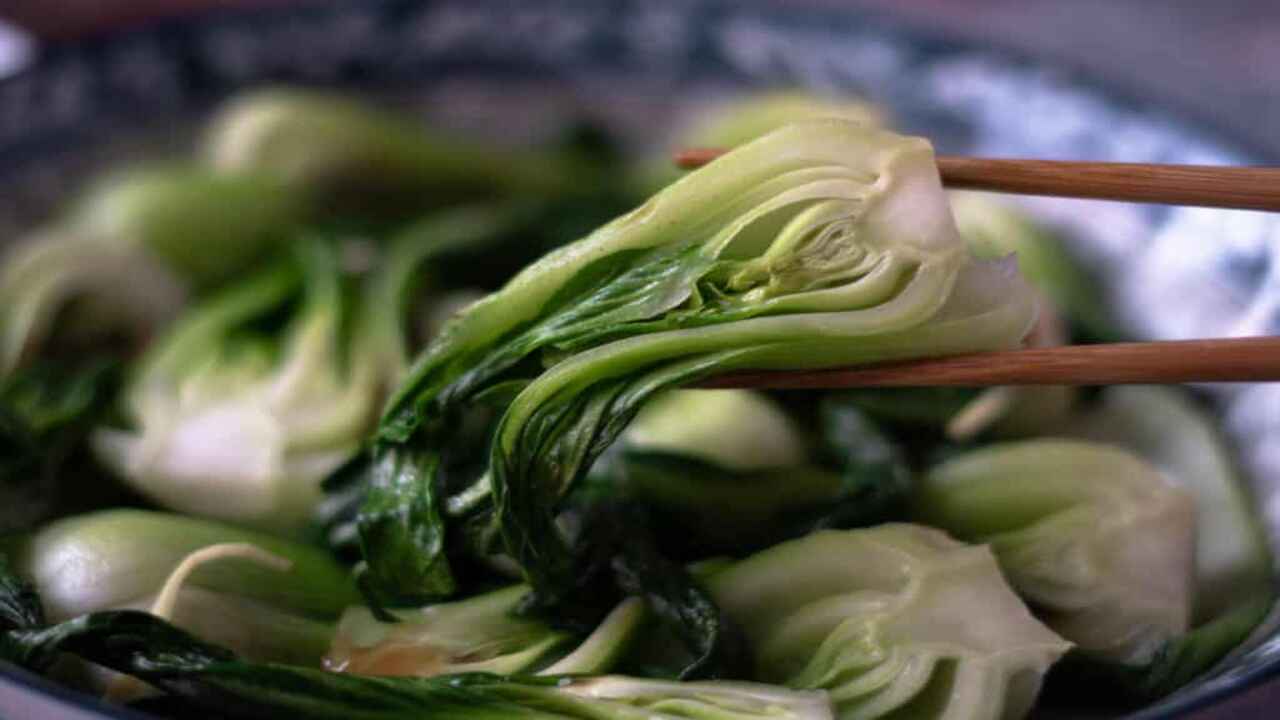
Cooking Methods for Shanghai-Bok Choy: Various ways exist to prepare this nutritious vegetable. Stir-frying is a popular method, where the bok choy is cooked with garlic and ginger for a burst of flavor. Steaming is another option, resulting in bright green leaves and tender stalks.
Roasting, boiling, grilling, and using raw in salads are also great ways to enjoy Shanghai-bok choy. Each method offers a unique taste and texture, making it a versatile ingredient.
Stir-Frying Bok Choy
Stir-frying is a popular cooking method for Shanghai-Bok Choy, preserving its crispness and vibrant green color. Heat oil in a wok or skillet, then adds garlic and ginger for flavor. Stir-fry the bok choy until it is tender-crisp. Enhance the taste with soy or oyster sauce, and season with salt and pepper.
This quick cooking method helps retain Shanghai-Bok Choy’s nutritional value while creating a delicious side dish or a flavorful addition to stir-fries with other vegetables or protein.
Blanching Bok Choy
Blanching bok choy helps preserve its vibrant green color and crisp texture. To blanch, simply boil water and add the bok choy for a few minutes before transferring it to ice water. This quick and easy method prepares bok choy for stir-fries, soups, or salads.
Not only does blanching retain the nutritional value of bok choy, but it also helps soften any bitterness. Whether you’re working with whole bok choy or chopped leaves, blanching is a versatile cooking technique that ensures the bok choy maintains its flavor and nutrients.
Nutritional Benefits Of Shanghai Bok Choy

Shanghai-bok choy is not only delicious but also packed with nutritional benefits. This leafy green vegetable is low in calories but high in vitamins and minerals. It is an excellent source of vitamin C, which can boost the immune system and promote healthy skin. Shanghai-bok choy also contains vitamin K, which is important for blood clotting and bone health.
Additionally, it is rich in folate, a B vitamin that supports cell growth and development. The vegetable also provides dietary fibre, which aids in digestion and can help maintain a healthy weight. Incorporating Shanghai-bok choy into your diet can improve overall nutrition and support your health.
Conclusion
Shanghai Bok Choy is a delicious addition to your meals and a highly nutritious green vegetable. Packed with vitamins, minerals, and antioxidants, it contributes to overall health and well-being. With its origins dating back centuries, this versatile vegetable has become a staple in many cuisines worldwide.
When selecting Shanghai-Bok Choy, look for crisp, vibrant leaves and firm stalks. Proper storage in the refrigerator will ensure its freshness and extend its shelf life. Before cooking, clean the leaves thoroughly and trim the ends.
There are various cooking methods for Shanghai-Bok Choy, including stir-frying and blanching, which help retain its crisp texture and vibrant colour. Incorporating this nutritious green into your meals is a great way to add flavor and enhance the nutritional value of your dishes.
Frequently Asked Questions
1.What Is Shanghai Bok Choy?
Ans: Shanghai-bok choy, also known as baby bok choy or pak choi, is a leafy green vegetable with a mild and slightly sweet flavor. It is commonly used in Asian cuisine, particularly stir-fries and soups. This nutritious vegetable contains vitamins A, C, and K, calcium, and fibre.
2.Is Shanghai Choy The Same As Bok Choy?
Ans: Yes, Shanghai-Bok Choy is the same as bok choy. Also known as Chinese cabbage or pak choi, Shanghai-Bok Choy has tender stalks and dark green leaves. It is commonly used in stir-fries, soups, and salads.
3.What Is The Difference Between Shanghai And Pak Choy?
Ans: Shanghai-bok choy and pak choy, both types of Chinese cabbage, have a slight difference in shape and size. Shanghai-bok choy has broader, flatter leaves compared to the more compact and upright leaves of pak choy. Both varieties are handy in Asian dishes for their mild, slightly sweet flavor.
4.What Is The Difference Between Shanghai Tip And Shanghai Bok Choy?
Ans: Shanghai tip and Shanghai-bok choy are actually the same vegetables. The term “tip” refers to the young, tender leaves, while Shanghai-bok choy is the mature version. Both are equally delicious and nutritious.
5.What Are The Health Benefits Of Shanghai Bok Choy?
Ans: Shanghai-bok choy offers numerous health benefits. With low calories and high fibre, it aids in weight management. Packed with vitamins A, C, and K, it supports immune function and healthy skin. This nutritious green also provides calcium for strong bones and teeth. Additionally, its antioxidants may help reduce the risk of chronic diseases like heart disease and cancer.
Meet Joseph Bryant, the creative force behind Foodsguider. As a self-taught chef and passionate food explorer, Joseph Bryant invites you to savor the journey through delightful recipes and the stories that accompany them. From kitchen adventures to the joy of sharing, join Foodsguider in celebrating the magic of good food and lasting memories.
